
- Apps or web?
- Is data the friend of users or creepy intrusion?
- Does project envy lead to closed thinking or can we learn from others?
These are just a few of the museum technology-management topics getting some lively exchanges recently in Newcastle/Gateshead, at the ever-stimulating MuseumNext. These are not new debates, even for museums, but thinking has evolved with museum products and services over the years. Here are some thoughts on these, for what they’re worth.
MuseumNext is all about interesting debate. So rational argument is a good way to inform people, yeah? Well, maybe not – I have just been reading this interview with Brendan Nyhan whose research indicates that facts that challenge people’s strongest opinions, can actually reinforce their existing viewpoint… And so, rather than worry about reasoned argument with objective points, I thought it might be easier just to try a…
And so, rather than worry about reasoned argument with objective points, I thought it might be easier just to try a…
GRUDGE MATCH!
Here are some of the hot digital grudge matches, as they played out (in no particular order) in debate across sessions. Thrashing these things out is a great way to think them through and get insight. Don’t worry, no real museum blood was spilled – at least as far as I know…
Apps v web
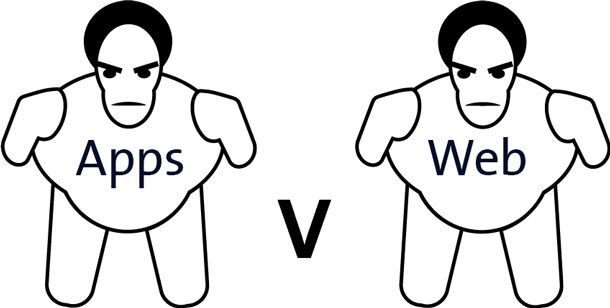 The old ones are always the best ones. You might have thought this was resolved ages ago, but nay! This was most eloquently summed up thus:
The old ones are always the best ones. You might have thought this was resolved ages ago, but nay! This was most eloquently summed up thus:
Bah. The “mobile web vs. apps” distinction is a bullshit one. Both are valuable for different reasons. #museumnext
And yet the debate continues…
Apps pros and cons
Apps live within proprietary platforms whose primary purpose is to lock up services within a closed ecosystem to corner a market. This raises issues for bodies preserving and finding public value in culture. Here’s an old chestnut that got voiced… (buzzphrase bingo pens are essential at conferences)
If an app’s the answer, what was the question?
A slightly facetious, but still highly relevant question. The range of views on this here was representative of the wider debate in development communities. There were suppliers discussing their app offers, people who are using apps, people who are wary of them and a whole bunch in between.
The sense that sometimes new tech is used because it is fun to play with more than it is thought-through, was still bugging people I spoke to at MuseumNext.
Perhaps this should read:
If (insert name of the technology you thought was “well cool” here) is the answer, how does it help with the user-need you are trying to address by selecting it?
(Of course this applies to mobile web just as much as apps)
Many people, including myself, also have deep-seated reservations about spending money on one-off short-lived apps where the same capital investment in web design and functionality enhancements would provide far longer-lasting and wider-reaching benefits.
For example, having a responsive display for any website is now an established basic user requirement. I would suggest that any museum service who has not yet made their main website responsive to work on any visitor’s mobile screen should perhaps do that before spending money on apps.
Currently, any app released needs to have at least two versions – iOS and Android – to avoid randomly excluding large proportions of our audiences. This costs. Apps also need people with more specialist technical skills to build them. These people are less common and more expensive to hire than web developers.
Due to the inherent competitiveness that drives app-platform development, apps can have unpredictably short lifespans and maintenance is a major issue. With handset ownership changing rapidly, using apps introduces higher revenue cost risks than web too. An oft-heard saying in museum technical circles is “apps are the new microsites” and occasionally “apps are the new Flash”.
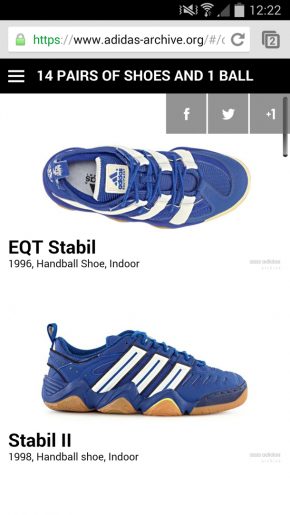
On that note, there were some audible gasps at the news that the Adidas Archive’s new website was built in Flash. I never expected to see a new museum site using Flash ever again. It is hard to imagine that its functionality could not have been created in HTML5 canvas. Millions of people can’t use Flash on their devices (only like – all iPhone and iPad users!). They had a separate site for mobile, which was OK but not great on a tablet. A shame because the shoe-based content is awesome and this sort of enticing browsable content is ideal for finger-exploring on a tablet.
On a tangent, I am sceptical at conferences of case studies of new untested apps or platforms without pre-launch objectives AND post-launch evaluation data against those prior objectives.
For some attendees the Antenna Intentional presentation “Access anywhere: from culture bites to smart cities…” by Jessica Taylor and Sam Billington veered into this territory with a series of case studies of museum innovation (OK) covering a rather thinly disguised product placement for a new venture they were selling involving talking statues (hmm…)
This session went a little silent on the official Twitter #museumnext hashtag channel, as muttering went off-hashtag, mainly about having a promo pitch in a keynote.
The more polite, public comments included this one:
Would love to know the results of the case studies that @Antenna_Lab are discussing, do people engage with digital public art?#museumnext
Here’s another typical comment on apps during the conference

Stop mithering – apps are great
Of course, what apps do well is to allow services to be designed that connect users to the extremely powerful features of people’s smartphone handsets. This is where web cannot yet compete and where apps have a number of features that may make them attractive. They can do camera control leading to AR, they can be linked up with ID tags, location beacons, accelerometers and all of the other sensors that smartphones have.
There are great examples of this in use in Museums. Cleveland’s Gallery One cleverly connects iPads with the walls to create magic for visitors using an app and really simple RFID tags. Tate’s fun Magic Tate Ball adopts a playful approach to marketing their brand by making a spreadable toy-inspired app. Museum of London have their augmented reality app, which delivered them a huge amount of positive brand publicity.
The use of apps is most prone to risk when talking about apps for use on audiences’ devices. Apps can be also used in fixed gallery devices too. The risk of apps not working on new devices is obviously eliminated. There can still be long term issues with software upkeep costs here too. Here’s an audience-view shot of people finding out about the Van Gogh museum’s Touch Van Gogh tablet app.

Mobile web
Responsive HTML5 web is truly the most democratic basic communication platform. It will work on almost any device. I believe it should be regarded as the default platform for delivering open cultural content, as it reaches the widest number of people with the least number of lock-ins to proprietary stuff. All other platforms need to show what they can deliver for users, that web can’t already, and justify the extra cost and risk and reduced audience coverage with a counter-advantage.
Apps can do this. They win hands down on cool features that can be utilised, their lock-in can also help with monetisation. Their big flaws are that they often exclude large numbers of the audience or cost a lot to include them, and have a built in short lifespan. Good for unlimited budgets or short lifespan products.
Mobile web is the people’s choice and just works for everyone if you are delivering essential basic content formats. It is lower cost, lower risk with long term stability. Being standardised, web can be integrated more easily in a digital asset driven delivery strategy and with existing tools like analytics. For open access services and any long term content, it would be hard to think why you wouldn’t use mobile web.
Verdict: Apps v Web
Web wins on reach, openness, long term sustainability and match with museums’ missions. Apps shout for a rematch, muttering they’ll be back – next time with evidence!
Data. A force for good or increasingly creepy spy on audiences’ lives
Another major polarised digital debate was touched upon at MuseumNext – this one is fundamentally about the politics of data ownership and who has the right to do what with the data that drives everything in life. It was good to note that no-one was debating whether the world is digital. It is, and everyone seems to have got over that -hooray! The issue remains though – if everything we do is built from data building blocks, then who owns the Lego? 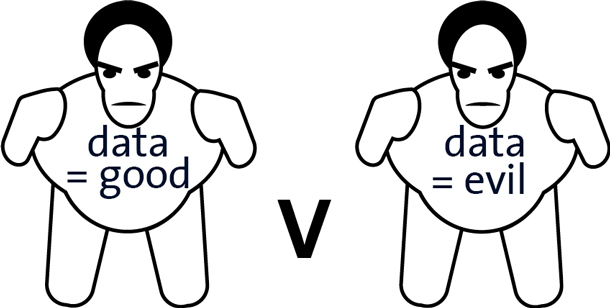
This didn’t come up nearly as much as I would have expected. In the world outside museums there is a raging division of audience opinion between Data Utopia (Smart Cities – yeah!, Club Card saves me money, etc etc.) versus Big Brother (Governments spying, Facebook, Google and Amazon are creepy spies trying to farm users and slowly taking control of the web to do so, by offering free services that suck up control of content and data, etc).
I think that “Data: Good v Evil” would be a great panel discussion for the next MuseumNext with people like Aral Balkan (er, on the data is evil side!) in a face-off with seasoned data wranglers like Colleen Dilenschneider from Impacts.
Colleen, firmly in the pro-data corner, blew everyone’s socks off with a charismatic performance, rattling off trends from analysis of large museum and related cultural organisation datasets.
She showed the power of data and how the scale of analysing very large amounts of data (yes, big data) can give compelling statistical weight in a way that random surveying cannot. Trends from supersets of data are statistically more robust was a key point she made. This shows how important control of our data is a management issue. This was a great slide showing what studies of big data can show us about the different things people value about a museum visit. Lots of commentators wondered if museum budget spending broke down in the same way.

Here are her slides. They were very good.
Antenna’s Jessica Taylor and Sam Billington mentioned the “Smart Cities” idea. This is a data buzz concept currently being claimed by a number of places. In the UK, Milton Keynes has declared itself thus, but there are plenty of others desperate to have been the first. During this talk, there were at least some rumblings of unease at how tracking people through their data is, um, a bit CREEPY.
Now the world is firmly digital, it is becoming increasingly important how we consider the effect of perception of data use on our brands. We cannot assume that audiences don’t care about how we behave with their data. There are risks to manage. These include how we work with third party services and platforms, if public perception becomes negative (we’re looking at you here, Facebook).
A company like Google may or may not be doing uncomfortable things with user data, but how its search sees us is also something we have a responsibility to understand. There was a great search-marketing presentation by Marty Hayes of VentureStream. He looked at how we create content and how it matters. Attention is hugely important in the digital world. How we are are ranked by Google matters – who we link up with, how we do it, the authority and language of content and even the technical speed of our websites all affect it.

Martys’ great rundown mentioned so many great points in one session, from sensible wording in URLs to clean metadata and so on.
It also contained my favourite quote of the conference:
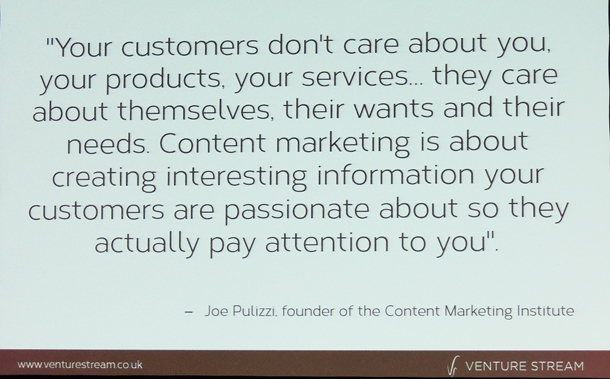
In other discussions, the use of data analysis of user feedback on art was discussed by Gretchen Scott & Jason Minyo from the New York Museum of Modern Art (MoMA) & POSSIBLE in their talk ” Everyone’s a critic: MoMA’s adventures in social media featuring Art140″. I loved the analysis of responses to art from art critics compared to museum visitors, the data showing that the latter used more evocative language in describing it.
Brendan Nyhan, quoted above, specifically advises visualisations as a way to counter the tendency people have for not changing their mind by seeing factual data alone. The MoMA session made great use visualisations, showing making data understandable is important and visualisation is a powerful technique. It is good to see this.
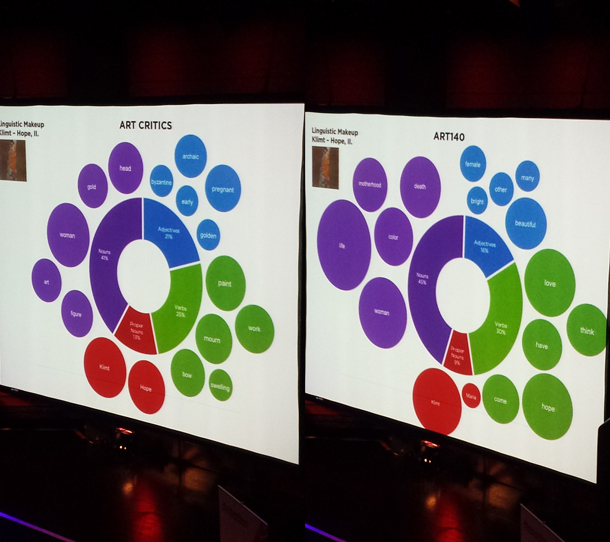
All credible conferences have a hashtag to expand live debate across the sessions and their audiences and outwards to people not attending. This debate leaves a data trail in the digital ecosystem. In the very enjoyable Open Stage session chaired by Jasper Visser, my participation was Tweetenstein, a data-driven monstrosity (a twitter-app, basically), which used the conference tag #museumnext to read the conference buzz and create base-level sentences.
Tweetenstein is a Twitter-data visualisation app, with the super-crude beginnings of artificial intelligence logic that can turn conference tweet cloud data into animated soundbites to demonstrate that not all visualisations are graphs. There is also a touch-operated hand input (powered by MakeyMakey) for extra fun when interacting with it
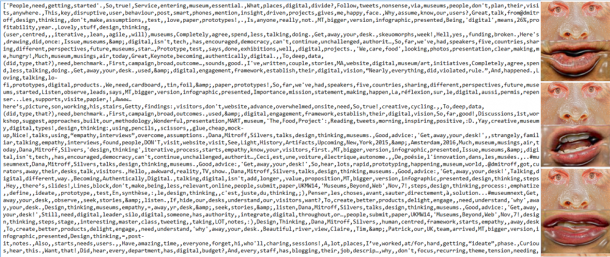
This was my favourite session. It was so anarchic with short sharp sessions and mass thumbwrestling …

As well as computer data, there is also value in the visual “data” of what people communicate when in your space. By examining social media, we can see directly how people present their happiness. These V&A Instagram images contain powerful information about what makes people happy – love, excitement at getting tickets, children, awe of space, lovely food, and so on and so on…
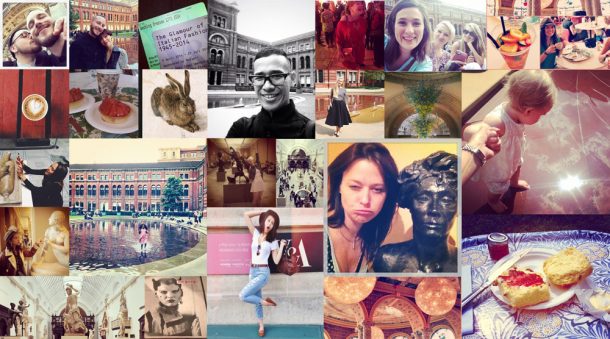
Verdict: Data: good or evil
Come on, digital is data, and data is awesome – Good data wipes the floor with evil data for the time being. BUT if we invest too much in closed content platforms, we may find we lose the rematch.
OK, this analogy could get stretched a bit thin here, but here is one attempt to push it…
The dangers of copying others
 The trouble with case studies is that they can invoke the dreaded “tech envy” amongst museum stakeholders. We all know the classic symptoms – someone in your organisation comes back from a visit (or a conference like MuseumNext!) where they have seen something they find WAY cooler that what your organisation is doing.
The trouble with case studies is that they can invoke the dreaded “tech envy” amongst museum stakeholders. We all know the classic symptoms – someone in your organisation comes back from a visit (or a conference like MuseumNext!) where they have seen something they find WAY cooler that what your organisation is doing.
We couldn’t talk about this without mentioning the epic Gallery One at Cleveland Museum of Art and there were a few comments like: “that’s all very well when you have a mega budget” (tech envy AND budget envy – oh dear!). The ever user-focussed Shelly Mannion from British Museum offered a typically thoughtful approach, summed up in her tweet:
Agree Gallery One shouldn’t be ‘the thing’ for other museums, but they got some fundamentals right and that is enviable. #museumnext
Right on! – the audience needs and business objectives of other organisations are often so different to one’s own, that copying is bonkers. This argument is often also phrased as: “start with you users, not the technology.”
This is good, except – CONTROVERSIAL – sometimes you should start with the tech and not consider the audience at all. The caveat is that this is for edge-case experimentation, not ploughing all your service budget into. Digital technology change induces disruption and as new things emerge, you really should invest time to play with them to get into their raw characteristics. Making things for real like this can tell you things, you never thought possible.
This user-focussed playful ethos was championed thoroughly by Dana Mitroff Silvers who talked about her consultancy work offering design thinking. Obviously suppliers all pitch their wares at conferences, but I liked the way she does it by not peddling herself, but instead talking about the actual design thinking ideas, like group rapid-prototyping and keeping it quick and analogue (and fun).
Her neat takeaways were:
- Get away from your desk
- Question assumptions
- Define problems/opportunities before solutions
- Prototype and iterate early and cheap
- Spend less time talking, more time doing
Dana talked about paper prototyping. Here’s one great Lo-Fi example:

We are fans. We also like whiteboard prototyping.
Here is an example from our Explorer Map. Our aim was to not just get behavioural data from Google Analytics, but to make the report in GA be actually useable by having a sensible report. This sketch shows one of the prototype data structures we scrawled to help us work up the data design. From scribble to useful understanding of user behaviour on a touch screen service – awesome :)

You can read how to do that here www.vam.ac.uk/blog/digital-media/why-bother-designing-layouts-for-tablet
Joe Baskerville also gave a great rundown on prototyping tools that can make life easier, in his session: “Prototyping for mobile development: options, tools and techniques” – including surprisingly PDF

Verdict: Tech Envy v Disruption research
Slam down – disruption research wins by a mile. Tech envy is such a loser
Finally, spot yourself in the crowd
MuseumNext is a great conference with a good live buzz on Twitter, etc. as it goes. This aerial shot shows this healthy digital multi-screening behaviour during a packed session in the Sage. This is what our audiences do everyday – live it :)

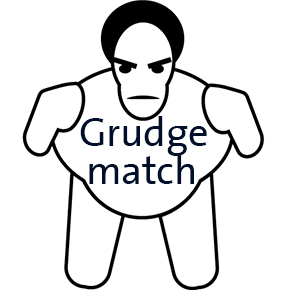
 Emma McLean
Emma McLean  Vicky Pearce
Vicky Pearce 


Great round-up Andrew.
Thanks for the mention and for sharing my slides.
Spotted myself in a couple of those photos too!
I feel a ‘Digital Grudge Match’ YouTube video coming on…!
Tweetenstein still haunts my dreams.
Thanks Marty – it was quite hard deciding what to leave out. There were so many other great discussions.
And ha ha Gavin, Tweetenstein was only in a disembodied state, but one day may get fleshed out – see also…
http://www.instructables.com/id/Arduino-controlled-animatronic-wooden-head-readin/
and
http://www.instructables.com/id/How-to-make-a-remote-control-sentient-web-puppet-b/
and even…
http://www.instructables.com/id/Psychic-Fortune-Teller-An-automaton-that-reads-t/
This was so awesome!
MuseumNext happened to be one of the best summit I ever had visited. Really enjoyed so much.
MuseumNext is such an amazing conference. So much knowledge and like-minded people around you. Loved it there.
Thanks For Sharing this Wonderfull article really appreciating this post keep sharing
Download TutuApp Latest version for Android Awesome post
Amazing! thank you for this post it was very helpful.Generally, i don’t read the blog post but it is something which gave me so much of information.
Wonderful share,
Thanks
Amazing! thank you for this post it was very helpful.Generally, i don’t read the blog post but it is something which gave me so much of information.
The Article you have posted is encouraging me, it is great to read thanks for sharing your experience. It is a great article that you have shared with us nice content thanks for sharing your knowledge and experience.
That’s Good You have the nice information thanks for sharing. If you need Apple AirPort Customer Service
Help Use Our Service.
Before making an investment decision over mobile apps, businesses have to decide between native apps, hybrid apps and web apps.
thanks
good
Greate! Very amazing article, I learned lots of this article. Thank sharing.
What you share I have applied quite successfully, thank you.